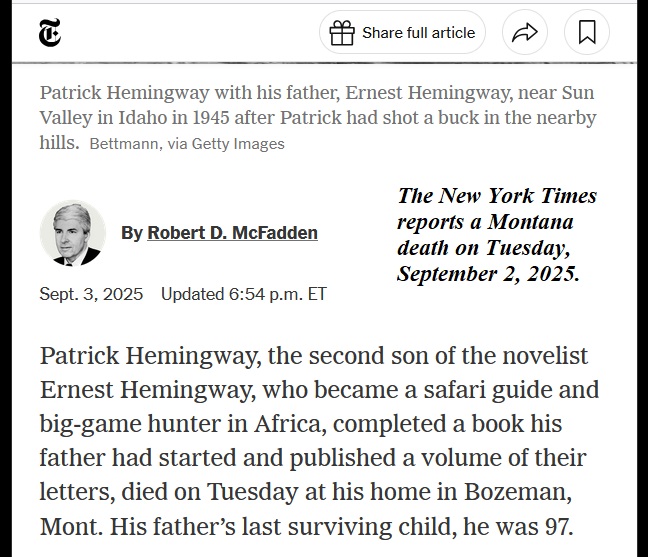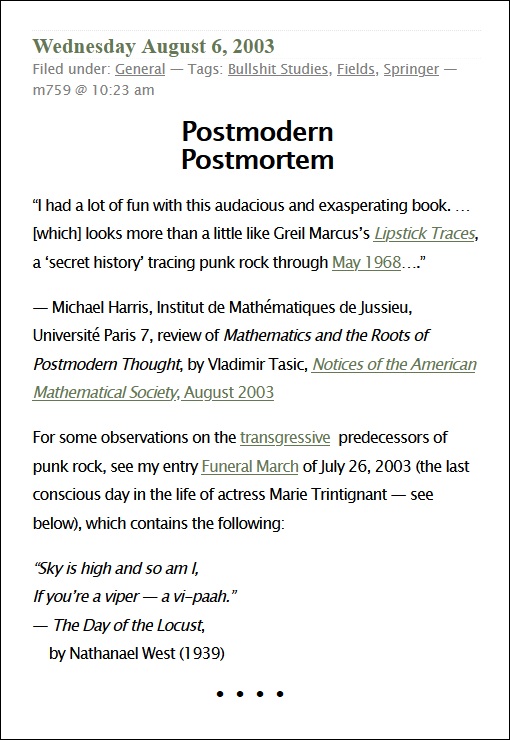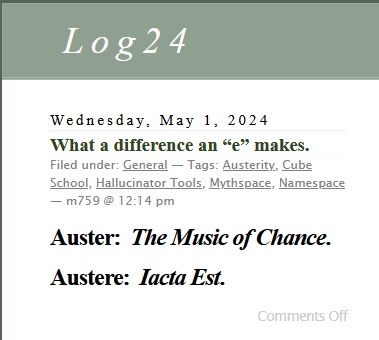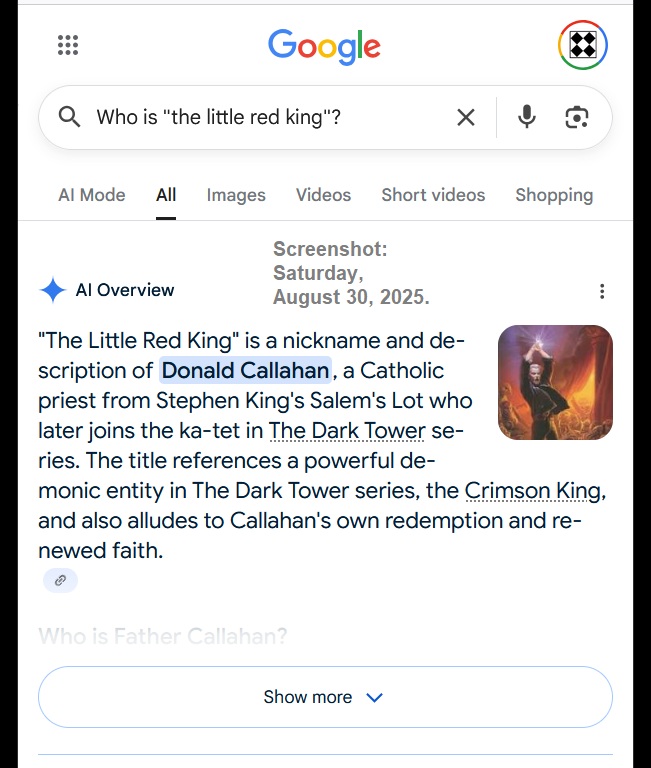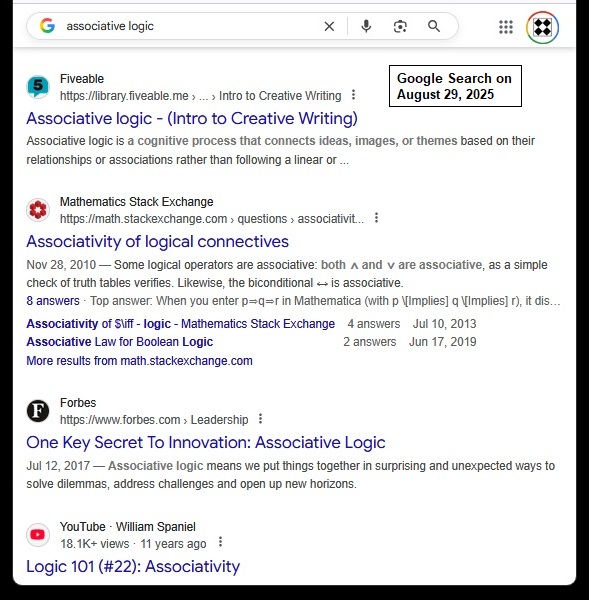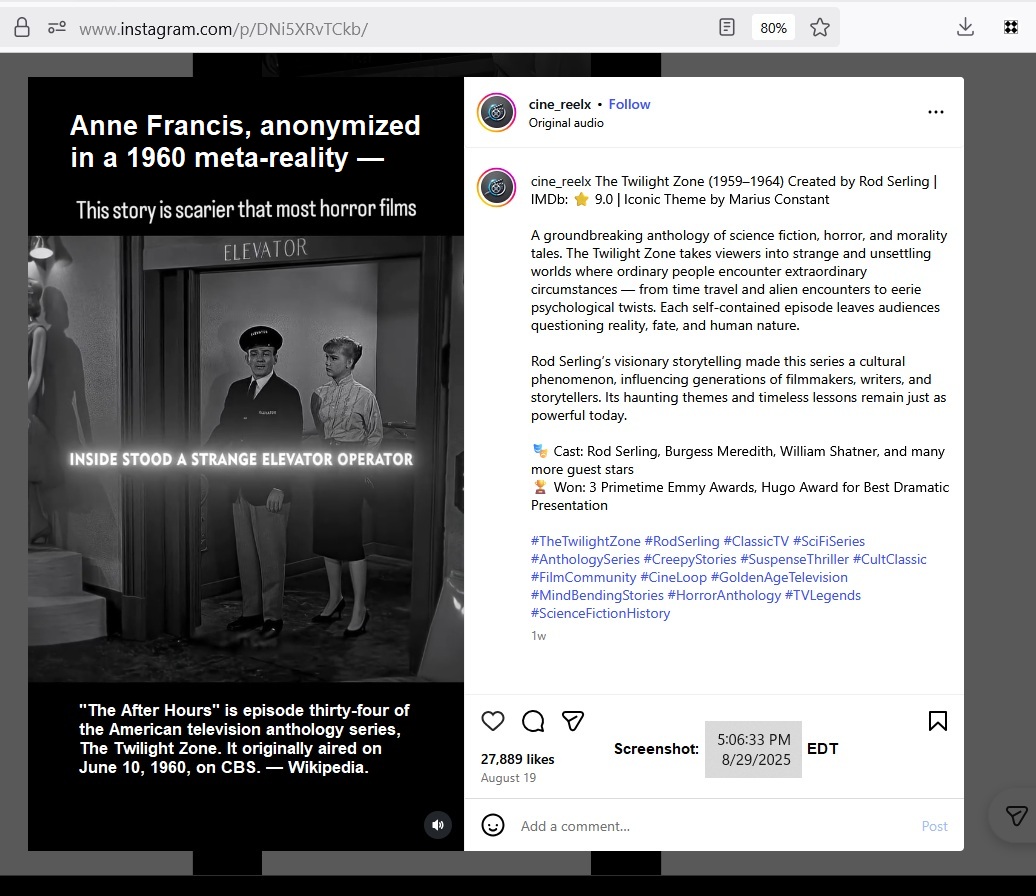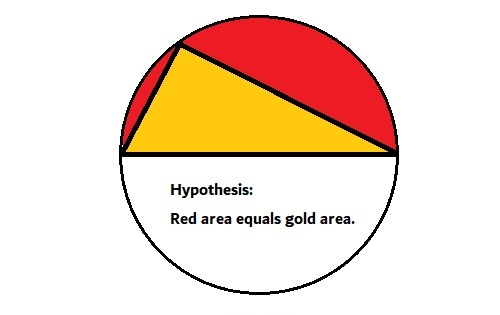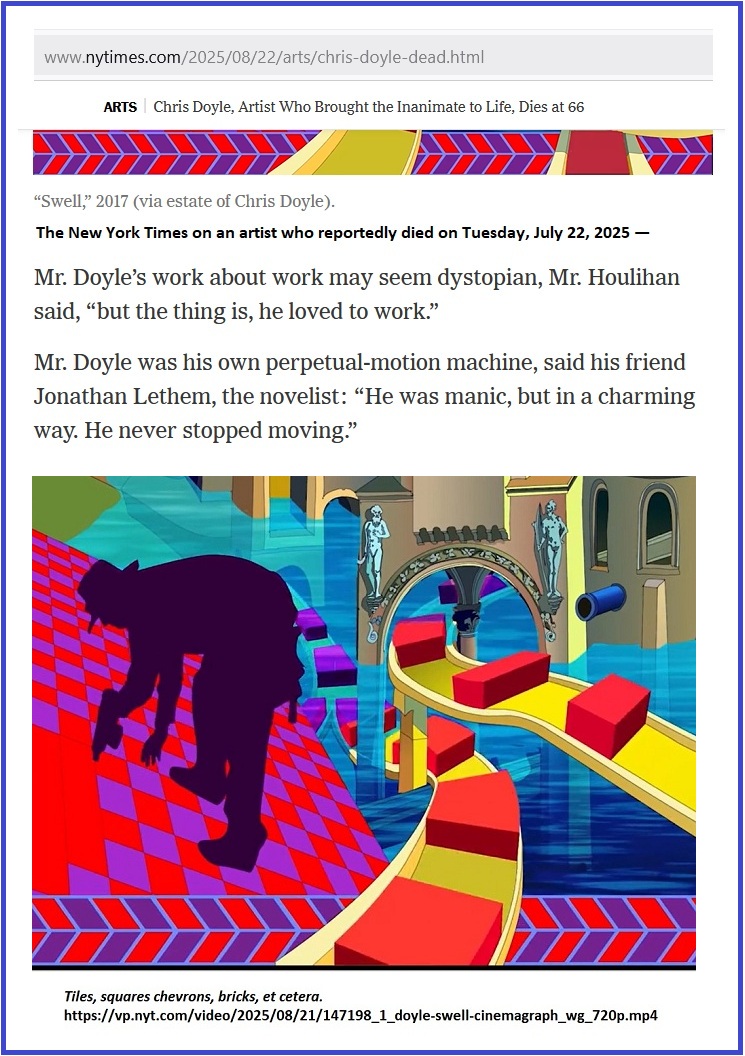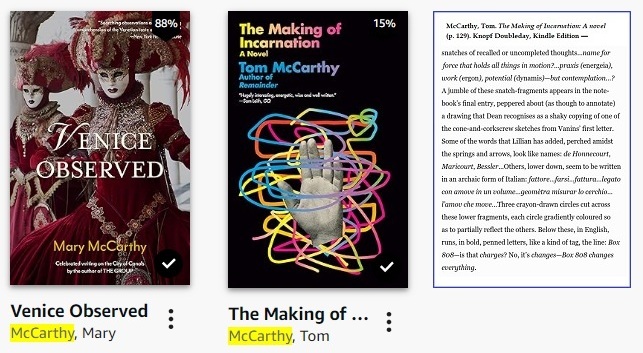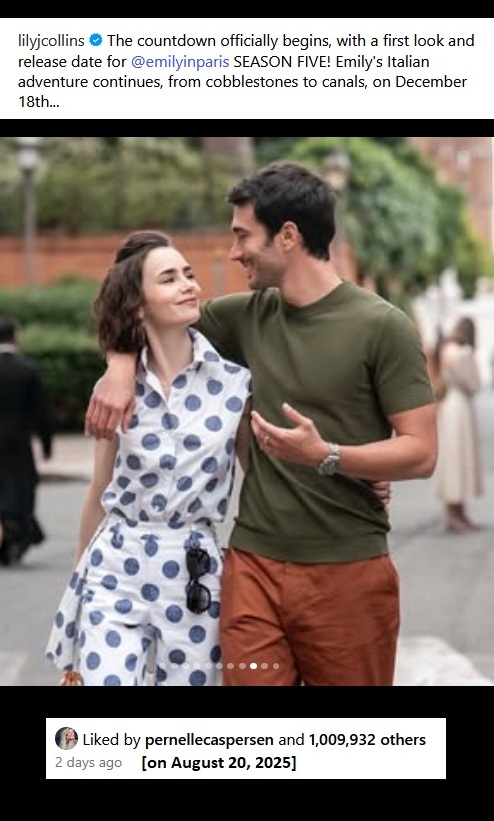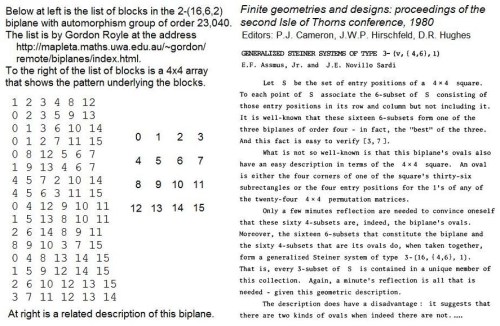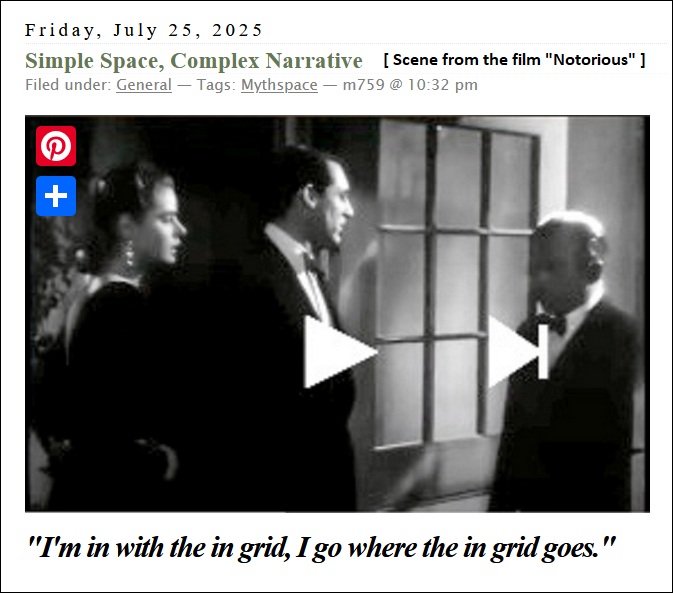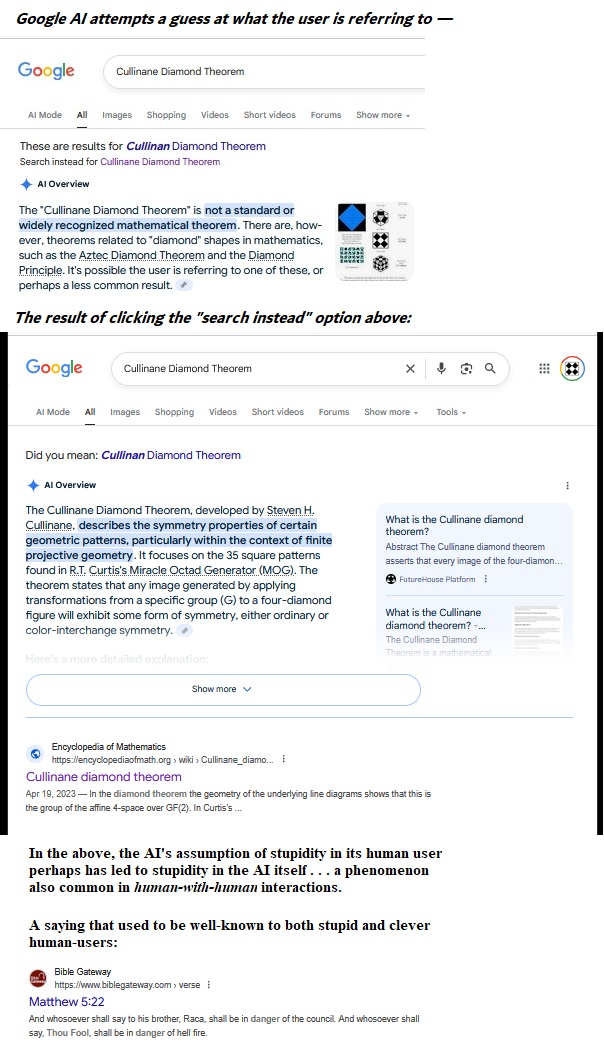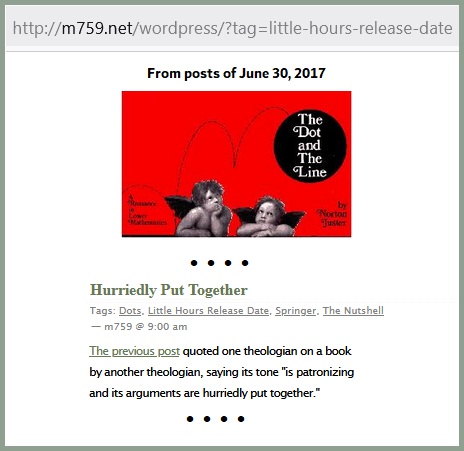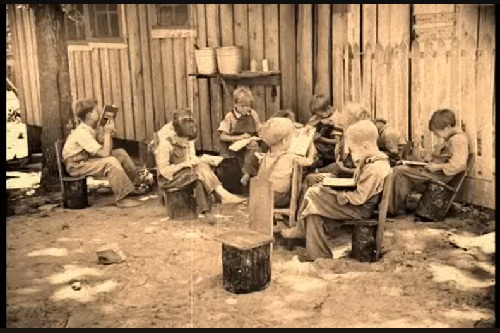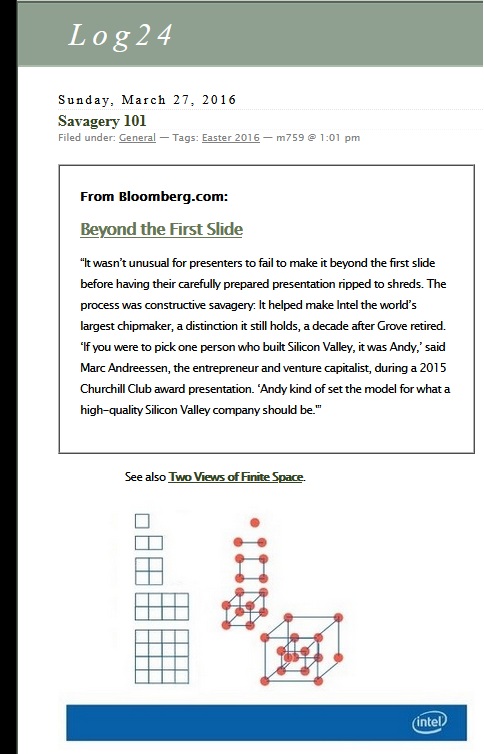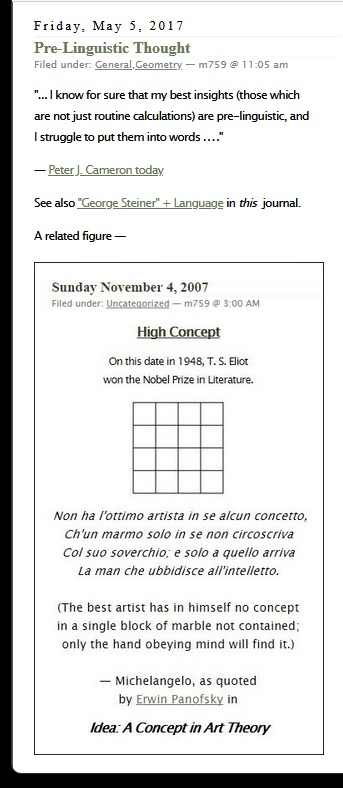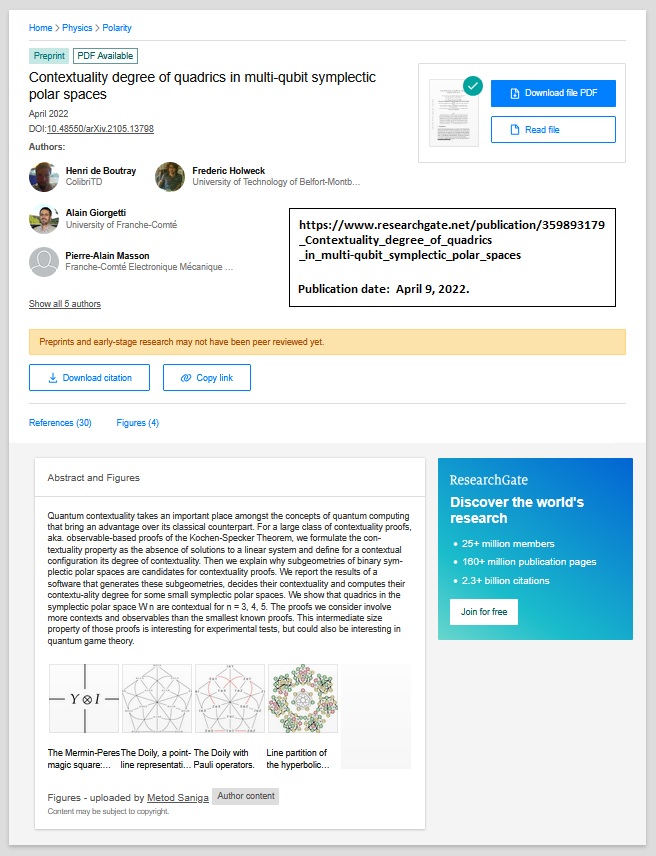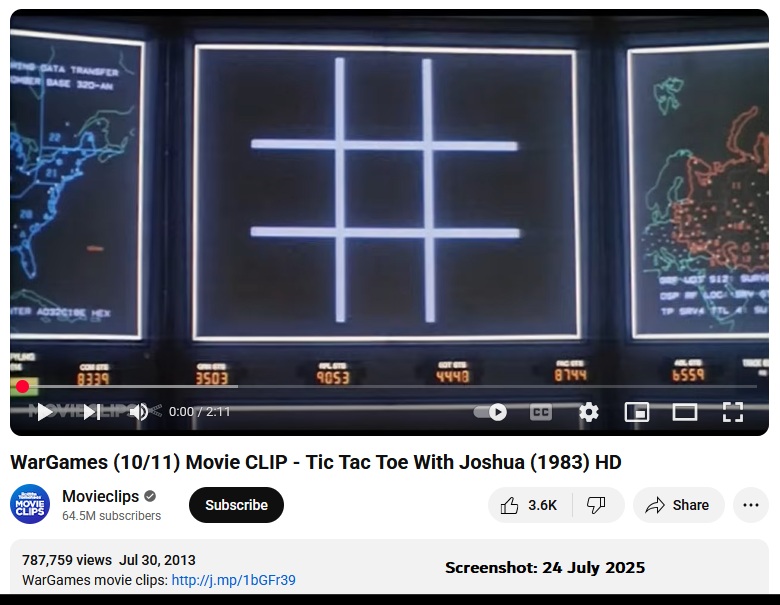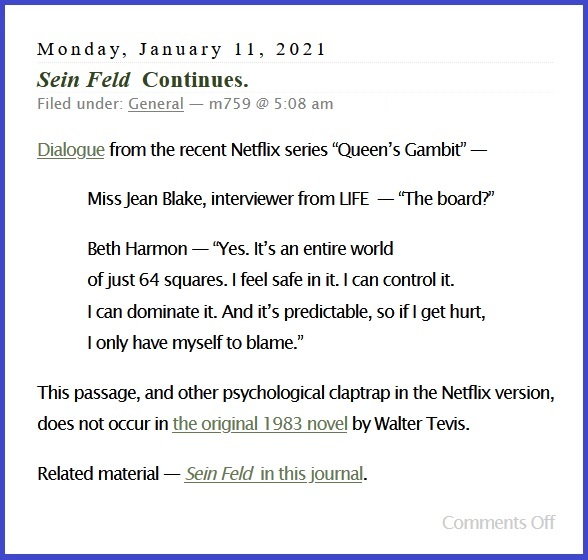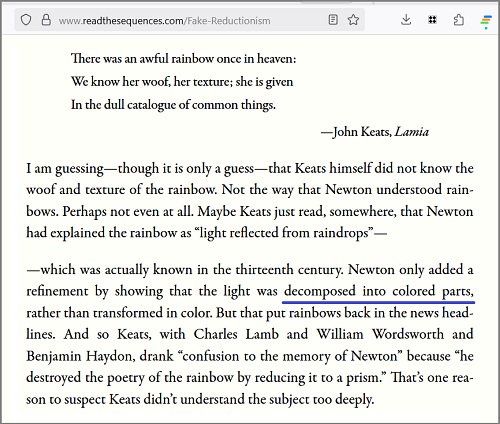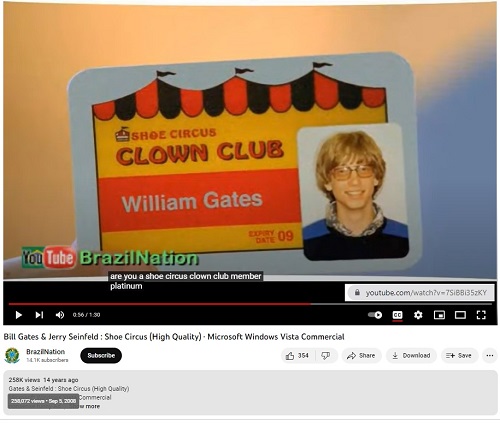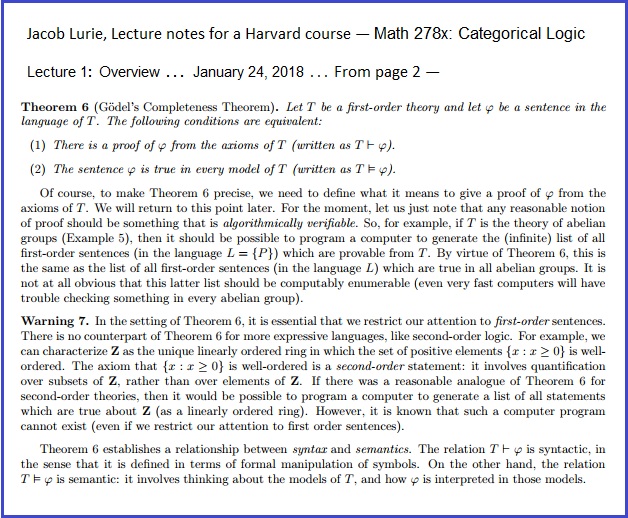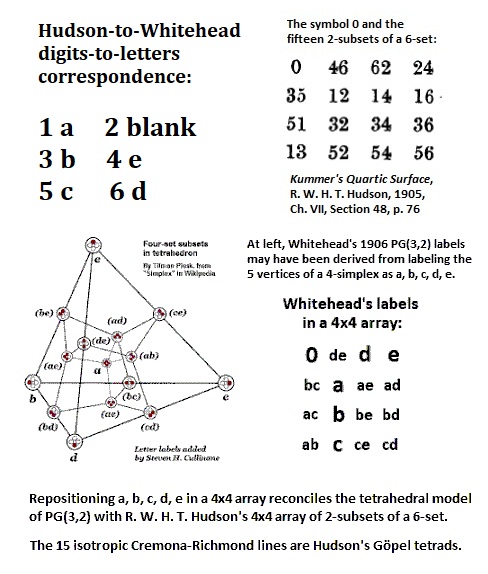Friday, September 5, 2025
For T. S. Eliot — Intersection Theory
For Pilgrim World* — A 9/11 Quote
"The visitors are steered away from shamanism’s dark undercurrents…."
— London Review of Books, Vol. 47 No. 16 · 11 September 2025 ·
Review of Shamanism: The Timeless Religion by Manvir Singh.
* Vide a scene from Season 2 of "Wednesday" —
For Go-cart Mozart — Abduction from the Academy
2:02 PM Friday, September 5, 2025 (GMT+2) . . .
Time in Venice, Metropolitan City of Venice, Italy

"Spirit birds that ride the night, stranger than dreams" — Point Omega
Annals of Nevermore Academy:
For Principal Dort

"Always with a little humor." — Dr. Yen Lo

Some cartoon graveyards are better than others.
For Principal Dort
Thursday, September 4, 2025
Poetic Art
Bartender Art
“Art, being bartender, is never drunk.” — Peter Viereck
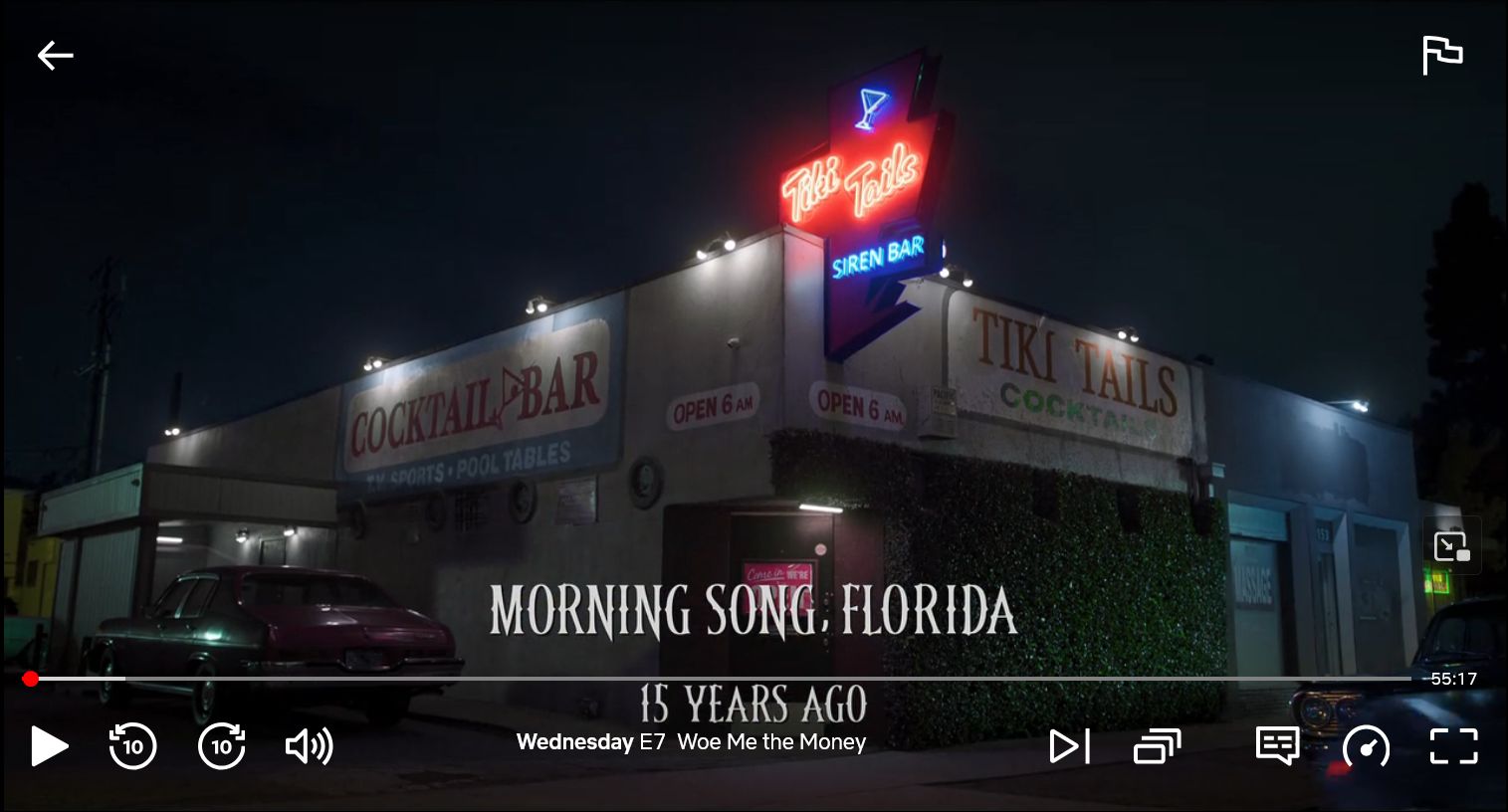


Today is reportedly Lifton's day of death —
in sacerdotal jargon, his dies natalis.
7/11 Flashback* for Cairo Sweet
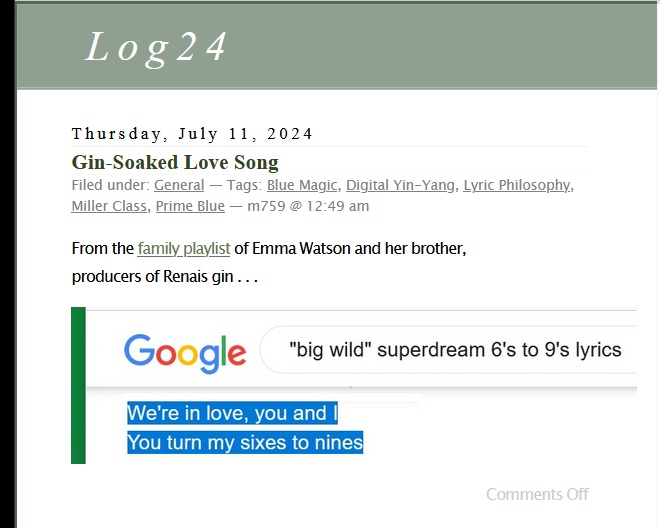
* Suggested by the 7/11 birthday of a recently deceased fashion designer
and by the opening of Wednesday, Season 2, Episode 7 —

Wednesday, September 3, 2025
Bar Exam: Elements and Qualities

Related artistic concepts . . .
Buddhist —
|
" The Four Elements are used in Buddhist texts to both elucidate the concept of suffering (dukkha) and as an object of meditation. The earliest Buddhist texts explain that the four primary material elements are the sensory qualities solidity, fluidity, temperature, and mobility; their characterisation as earth, water, fire, and air, respectively, is declared an abstraction – instead of concentrating on the fact of material existence, one observes how a physical thing is sensed, felt, perceived.[24] " 24. Dan Lusthaus, "What is and isn't Yogacara." He specifically discusses early Buddhism as well as Yogacara. "What is and isn't Yogacara". Archived from the original on 31 March 2010. Retrieved 12 January 2016.. |
Christian —
|
Milton’s Paradise Lost :
Into this wilde Abyss, |
Graphic —

Lyrics for Megan
"He rides the ridge between dark and light
Without partners or friends"
— "Ridge Rider" – Russ Giguere's 1971 solo LP, Hexagram 16
"In between the dark and the light"
— Eagles, "One of These Nights" – released on June 10, 1975,
by Asylum Records.
Related lyrics — "Players only love you when they're playing."
Related backstory — http://m759.net/wordpress/?p=916 —
dark and light in a post featuring a younger Megan Follows.
Narratives for Letterman:
“Julian, Tony . . . Tony, Julian.”
"A satellite image captures an unknown object
sitting on the Antarctic snow. Cryptologist
Julian Rome, a teacher at the University of
California, Berkeley, is invited to investigate
the mystery." — Wikipedia
"Tony Rome is an ex-cop turned private investigator
who lives on a powerboat in Miami, Florida, called
‘Straight Pass’. This is a reference to the fact that
Tony also has a gambling problem." — Wikipedia
To some, more interesting narratives might include
"Mission: Impossible — The Final Reckoning" as a
narrative elaboration of a Howard Hughes favorite,
"Ice Station Zebra."
“Julian, Tony . . . Tony, Julian.”
Petition for the Sainthood of Simone Weil
"Don't solicit for your sister, it's not nice . . ." — The late Tom Lehrer.
"The pleasure comes from the illusion"
— André Weil in 1940, quoted here on the dies natalis of Elizabeth II.
From the Viper Room
The previous post contained a link to Dogma Part II: Amores Perros.
That 2001 compilation contrasted the cultural approach of John O'Hara
(whose title From the Terrace appeared in today's previous post) with
that of Nathanael West (author of The Day of the Locust).
Some further cultural notes more in the spirit of West than of O'Hara —

From the Terrace . . . Continues.
From Dogma Part II: Amores Perros —
"It is night on the fourth of the curving terraces, high above the sea.
The stars are full out, known and unknown. Dante is halfway up the mountain….
It is half through the poem; half the whole is seen and said: hell, where grace
is not known but as a punishment; purgatory where grace and punishment are
two manners of one fact."
— Charles Williams, The Figure of Beatrice, Faber and Faber, 1943

Last night on Wednesday Season 2 , Episode 5 of 8 —

Tuesday, September 2, 2025
In Memory of Charles Grodin:
New Dog, Old Tricks

Instagram's Lilahlore today . . .
"Fancy dress in bathtub, why not"
Instagram's Lilyjcollins on May 2, 2022 . . .
"Happy Met Ball Monday!"

New Dog, Old Tricks
Link (for Castle Fontainebleau)
Back-to-School Supplies for Nevermore Academy
Monday, September 1, 2025
Non-AI Theology

For different slants, see Hexagrams 14 and 43 in the figure below.
For more backstory, see a post from Eliza Doolittle Day, 2025.
Labor Day Meditation
|
Cover illustration:
Spies returning from the land of
Colored woodcut from |



Sunday, August 31, 2025
Annals of Associative Logic —
von Franz on Pauli’s dream: “A dance* results.”
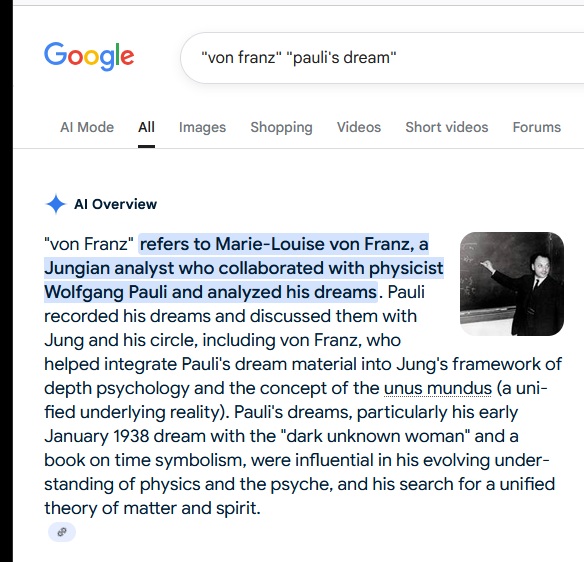
See as well Dirty Dancing (1987) and . . .

Related cinematic quotation —
"She's like the wind."
Related minimalist illustration —
Note the "357" central row in the figure at right above.
* Related posts: http://m759.net/wordpress/?s="A+dance+results" .
von Franz on Pauli’s dream: “A dance* results.”
“Back to the Old AI Overview”
Prelude: Project Hail Gaitskill . . .
The opening sentences of "The Parrot in the Machine," by James Gleick,
in The New York Review of Books of July 24, 2025 —
"The origin of the many so-called artificial intelligences now invading our
work lives and swarming our personal devices can be found in an oddball
experiment in 1950 by Claude Shannon. Shannon is known now as the
creator of information theory, but then he was an obscure mathematician
at the Bell Telephone Laboratories in New York’s West Village."
Why Gaitskill? . . . See
"The House We Lived In," by Mary Gaitskill
in her Substack on May 02, 2025.
More recently . . .


Saturday, August 30, 2025
Friday, August 29, 2025
“Now put the foundation under it” — Adapted from Thoreau
The Moon Side of the Dark
Thursday, August 28, 2025
Wednesday, August 27, 2025
Semitism for St. Cecilia
Time in Venice, Italy: 10:44 AM Wednesday, August 27, 2025 (GMT+2)
|
Cover illustration:
Spies returning from the land of
Colored woodcut from |
The AllSpark as Agent 13 —
Springsteen to a possible Agent 13 —
"Is that you baby or just a brilliant disguise?"
Updates the same day . . .
Time in Venice, Italy: 8:35 PM Wednesday, August 27, 2025 (GMT+2)
Related art from the dies natalis of Rudolf Arnheim —
Time in Venice, Italy: 10:10 PM Wednesday, August 27, 2025 (GMT+2)
Tuesday, August 26, 2025
For Fans of the Coen Brothers’ “Hail, Caesar!”
Backstories
The previous post suggests a flashback . . .
Vide http://m759.net/wordpress/?tag=on120410.

Not your grandfather's Appian Way.
See as well . . .
Zuckerberg for Salinger: Roofbeams and AI Girls

A view some may prefer . . .
Just uphill from Robert A. Heinlein's former home in Laurel Canyon —
♫ "Slow down, you move too fast . . ."
Using AI for Search:
Combinatorial Partitions as Projective Lines …
Within the Klein Quadric
Some backstory: yesterday's post "Using AI: Search vs. Chat."

Vide a PDF of the complete Grok report —
In its five-and-a-half-minute research and reasoning process
Grok was able to reference a post from this weblog, but it missed
the correct answer to the prompt — Cullinane's "four-color
decomposition theorem" in the following weblog image:

Combinatorial Partitions as Projective Lines …
Within the Klein Quadric
Monday, August 25, 2025
Using AI: Search vs. Chat
Adapted song lyric —
"I used Chat, Chat used me, neither one cared."
What if we read the above machine-boilerplate "Comments Off"
remark ending a May 6 Log24 post as a dramatist's note?
Related reading —
https://www.nytimes.com/2025/08/08/technology/
ai-chatbots-delusions-chatgpt.html —
"Over 21 days of talking with ChatGPT, an otherwise
perfectly sane man became convinced that he was
a real-life superhero. We analyzed the conversation.
. . . We received a full export of all of Allan Brooks’s conversations
with an OpenAI chatbot and analyzed a subset of the conversations
starting from May 6, 2025, when he began the chat about pi."
A Song for Lily
♫ "I'm an elevator operator . . . ."
This post is in part to avoid confusion between the above artist
and an artist whose similar work is featured in the previous post.
The Dream of the Spinning Dancer
Friday, October 12, 2012
|
This flashback was suggested by Cristi Stoica's "Spinning Dancer" post
on an earlier Columbus day.
Fans of Aldous Huxley may enjoy other posts tagged Petri Pictoris.
Sunday, August 24, 2025
“City of Bones” Shadow Work
The musical introduction to today's "CBS Sunday Morning" suggests . . .
. . . and therefore also . . .

Music from the above Bach portrait:
Fans of XORschism may consult this journal on
the above YouTube Bach date — May 29, 2024.
Saturday, August 23, 2025
“Yes, Celine”
Venice for Screenwriters: “The Thomas Mann Script”
Friday, August 22, 2025
Geometry: Points All Her Own
Flaming Coattails Department: Impact Statement
N-41
From a novelist's account in yesterday's post "May 29 Bunker Bingo" —
"Ibrahim delivered this information with the excitement of a man
reading bingo numbers in a nursing home."

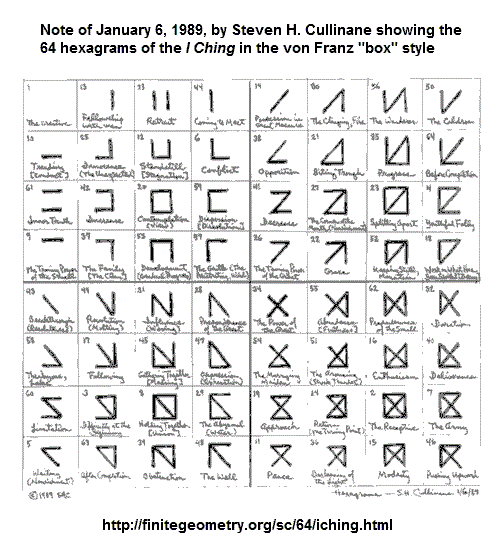
Thursday, August 21, 2025
May 29 Bunker Bingo
From a May 29 review of "Mission Impossible: The Final Reckoning" —
"Ethan Hunt is sealed in an unreality bunker* of his own."
From a novel, The Footprints of God , published August 12, 2003 —
A tour guide describes stations of the cross in Jerusalem:
"Ibrahim pointed down the cobbled street to a half circle of bricks
set in the street. 'There is where Jesus began to carry the cross.
Down the street is the Chapel of Flagellation, where the Roman
soldiers whipped Jesus, set on him a crown of thorns, and said,
"Hail, King of the Jews!" Then Pilate led him to the crowd and cried,
"Ecce homo! Behold the man!" '
Ibrahim delivered this information with the excitement of a man
reading bingo numbers in a nursing home."
* Hunt's unreality bunker is not unlike that of the Footprints of God hero.
Fall Guy: “Coattails Aflame”
From a review in Christianity Today on May 29, 2025 —
From a post of Monday, August 18, 2025 —

Backstory —

“Do Things with Words”* . . . Or Not.

Related Art:
Click the above space partitions for related material.
* Vide the origin of the :"Do Things" phrase in Google AI Mode.
Requiem for a Programmer: Dammed?
An obituary yesterday for feminist programming pioneer Stephanie Shirley,
who in her early career presented herself in correspondence as "Steve,"
together with a CHE article on Milton, suggests a review of material
related to the fictional dramatic death of a programmer and the real death
of John Conway.
Dam
April 11, 2020, was the dies natalis ,
in the Catholic sense,
of John Horton Conway.
Don't call him Shirley!
The above-mentioned related material:
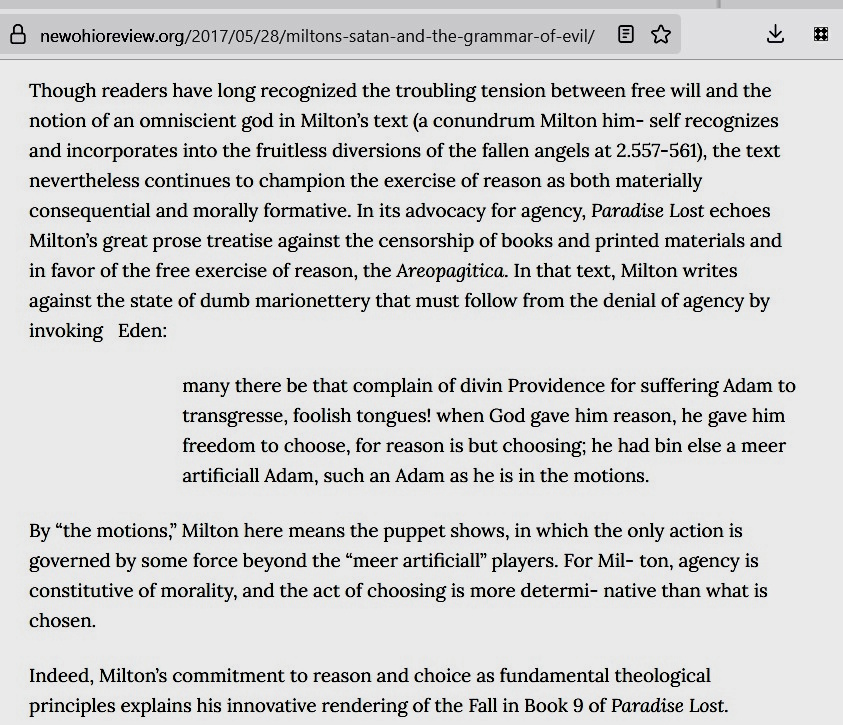
Wednesday, August 20, 2025
Ex Fano: Dots and Lines . . . Revisited
Partitions of an 8-set into four 2-sets are related to
lines in projective geometry as follows . . .

Tuesday, August 19, 2025
Awfulness Revisited

“There are dark comedies. There are screwball comedies.
But there aren’t many dark screwball comedies.
And if Nora Ephron’s Lucky Numbers is any indication,
there’s a good reason for that.”
— Todd Anthony, South Florida Sun-Sentinel

See also posts tagged Faustus Music and posts now tagged
Little Hours Release Date.
Boustrophedonic* Elegy and Moonshine Lullaby
This post, with its image from March 16, 2009, was suggested by
the Patty Loveless video "You'll Never Leave Harlan Alive" and by
the dies natalis of a noted Appalachian moonshiner.
We saved a seat for you.
* A term that aids an understanding of finite time-and-space relativity.
The Midnight Guardian: Hepworth’s Harpstrings

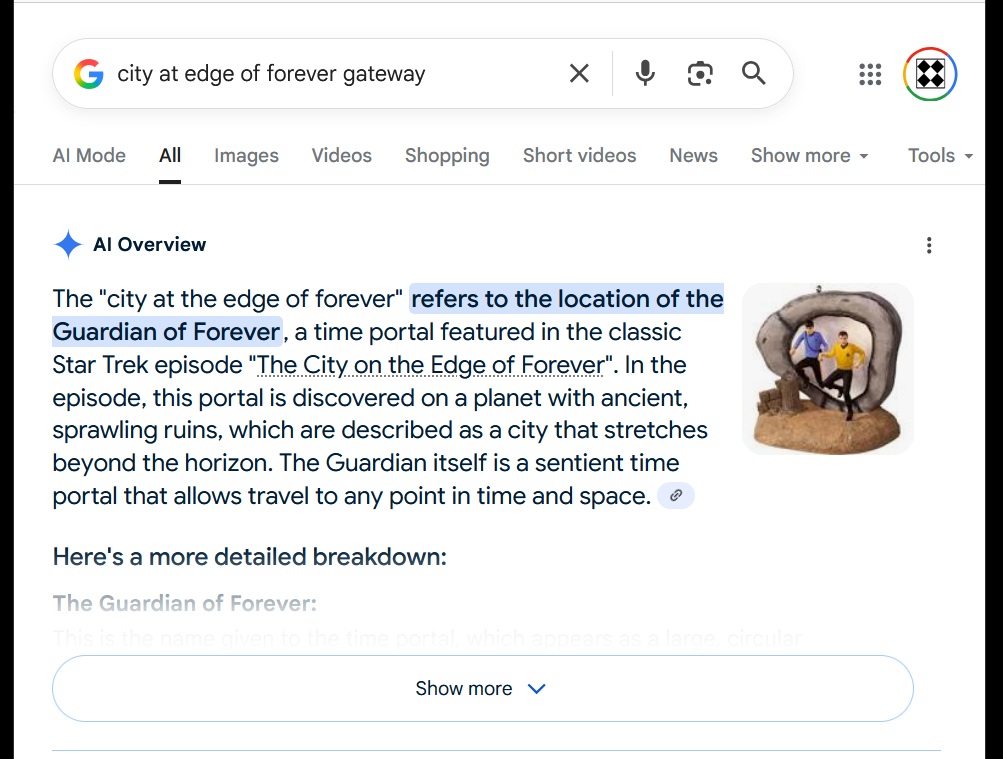
Monday, August 18, 2025
For Funk & Wagnalls’ Porch —
Pivotal Moment! *

* From Faith Hill song lyrics
Pivotal Moment! *
Not-So-Hip Gnosis
From the Log24 post Occult Logic (June 4, 2025) —
|
"The Game in the Ship cannot be approached as a job, a vocation, a career, or a recreation. To the contrary, it is Life and Death itself at work there. In the Inner Game, we call the Game Dhum Welur, the Mind of God. And that Mind is a terrible mind, that one may not face directly and remain whole. Some of the forerunners guessed it long ago — first the Hebrews far back in time, others along the way, and they wisely left it alone, left the Arcana alone. That is why those who studied the occult arts were either fools or doomed. Fools if they were wrong, and most were; doomed if right. The forerunners know, and stay away." |

See as well this journal on the above TIME date — Jan. 25. 2005.
Design Project
Sunday, August 17, 2025
Narrative for Nevermore
From a post on Friday the Thirteenth (of July, 2018) —
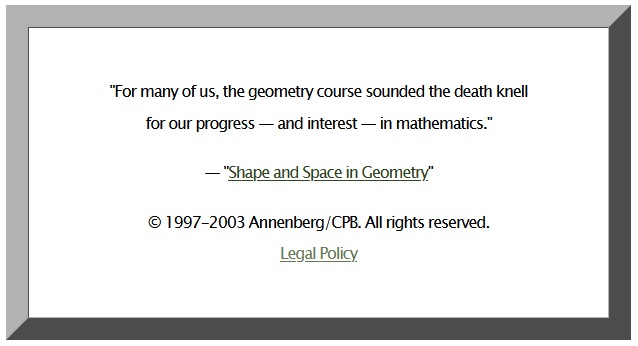
"Wishin' on a falling star, waitin' for the early train
Sorry boy, but I've been hit by a purple rain
Aw, come on Joe, you can always change your name
Thanks a lot son, just the same"
— Ventura Highway lyrics
A candidate for the lyrics' "Joe" . . .
Joe Caroff in his obituary today — "I always meet my deadlines."
Some cartoon graveyards are better than others.
Annals of Narrative: A Wielder of the Subtle Knife
Deserves Better than a Cartoon Graveyard.
Deserves Better than a Cartoon Graveyard.
Getting Past the First Slide:
Ventura Highway Name Change?
Ventura Highway Name Change?
Harmonielehre
"The feeling is one of tonality rising from the dead."
— Alex Ross, "The Harmonist," profile of composer John Adams,
The New Yorker, January 8, 2001.
Saturday, August 16, 2025
Friday, August 15, 2025
Castle in the Air
from the Sept Tours Foundation
Pinterest suggests that an image of the CGI castle Sept Tours
should be saved to the board "Binary Galois Spaces" —

Already there.
Partitions of an 8-set into four 2-sets are related to
lines in projective geometry as follows . . .

A related castle from a Groundhog Day Depth Haiku post —
from the Sept Tours Foundation
Search History — 105 lines in PG(5,2)
A search from August 15 —

Note: Partitions of an 8-set into four 2-sets are related to
lines in projective geometry as follows . . .

Thursday, August 14, 2025
The Klein Quadric and 105 Lines
Earlier Log24 posts tagged 105 Partitions suggest a look at . . .
Version 4 of the above paper is at https://arxiv.org/abs/2105.13798.
See also this journal on the Version 2 date — April 9, 2022 —
a post titled Academic Rhetoric on visual diagrams in mathematics.
The Perspective That Passeth Understanding

Wednesday, August 13, 2025
Vibrations
From a review of Teilhard de Chardin’s The Phenomenon of Man :
|
“It would have been a great disappointment to me |
"Particularly mathematics and music" . . .
See as well . . .
An illustration of a title by George Mackey —

The American Scholar date above — Nov. 9, 2015 — suggests
a review of posts now tagged Schicksalstag 2015.
Tuesday, August 12, 2025
Generations:
“Schicksalstag for Zelig”
A made-up book title featured in the previous post, The Hashtag Generation,
suggests some remarks related to Nov. 9 — Schicksalstag — 2019 . . .



Related reading: Posts in this journal tagged Schicksalstag 2019.
“Schicksalstag for Zelig”
Tesseract Art . . . Continues.


On magic hypercube "slippabilities" —
As the crow flies . . .
Or as the ant walks . . .

As usual, beware of the word "magic" —
Starbrick Institute:
We Put the Hype in Hyperspace!
We Put the Hype in Hyperspace!
Monday, August 11, 2025
Sunday, August 10, 2025
Apps
AI as Hype Tool: A Mathematical Tapestry
From the previous post's new Microsoft Copilot report on
the Cullinane diamond theorem —
"What emerges is a tapestry where geometry, algebra,
combinatorics, and visual art are tightly interwoven."
Cullinane Diamond Theorem:
Microsoft Copilot Deep Research Report, Aug. 10, 2025
|
The Copilot "Deep Research" Report on the Cullinane Diamond Theorem … Aug. 10, 2025
The Cullinane Diamond Theorem: Definition, Significance, and Applications
|
| Mathematical Component | Role in Cullinane Diamond Theorem |
Linked Structure/Field |
|---|---|---|
| 4×4 Diagonal Tile Array |
Base of all patterns; permutations generate G-images |
Graphic design, combinatorics |
| Group G (AGL(4,2)) |
Symmetry group acting via permutations of rows, columns, quadrants; isomorphic to affine group on 4-space |
Group theory, finite geometry |
| PG(3,2) |
Geometry of combinatorial structures; lines correspond to three-element sets among 15 points |
Finite projective geometry |
| Line Diagrams |
Visual representation of points/lines; sum to zero under binary addition (XOR); correspond to configurations in PG(3,2) |
Coding theory, geometry |
| Miracle Octad Generator (MOG) |
Combinatorial tool connecting diamond patterns, Golay code, and M24; mirrors the arrangement of 35 square patterns |
Group theory, lattices |
| Latin-square Orthogonality |
Orthogonality mirrors skew lines in PG(3,2); supports combinatorial design and coding |
Experimental design, statistics |
| Diamond Rings |
Ideals in ring of patterns; extensions lead to infinite family of combinatorial algebraic structures |
Ring theory, algebra |
| Leech Lattice |
Dense sphere packing; ultimate application of symmetry and combinatorial code |
Lattice theory, group theory |
| Walsh Functions |
Symmetry of binary additions reflected in digital orthogonal functions |
Harmonic analysis, signal proc. |
| Quilt and Art Symmetry |
Real-world manifestation, accessible via design and visual arts |
Visual art, education |
| Computational Puzzles |
Interactive models for exploring symmetry, group action, and combinatorial geometry |
Pedagogy, computer science |
| Mathieu Group M24 | Underlying sporadic group structure; stabilizer subgroups correspond to symmetry group in theorem | Algebra, finite group theory |
11. Conclusion
The Cullinane diamond theorem stands as an exemplar of mathematical interconnectedness, taking a pattern as accessible as a quilt design and showing that, beneath its surface, lies a structure as rich and profound as the group theory of sporadic simple groups, the design of error-correcting codes, and the geometric packing of spheres in the Leech lattice. Its formal statement grounds a vast array of applications: from explaining graphic symmetries, guiding experimental design via Latin squares, informing coding theory, to underpinning interactive computational tools and advancing pure mathematical research in finite geometry and algebra.
What emerges is a tapestry where geometry, algebra, combinatorics, and visual art are tightly interwoven. The diamond theorem transforms our view of symmetry from decorative flourish to mathematical inevitability—a property rooted not just in aesthetic preference, but in the deep logic of finite geometry and algebraic structure.
Further Reading and Exploration
- For those interested in interactive exploration, the Diamond 16 Puzzle and related online visualizers provide intuitive, hands-on experience with the theorem's implications.
- Advanced readers may delve into the role of the Miracle Octad Generator in coding and lattice theory, and the profound consequences in error correction and sphere packing.
- Explorations into quilt design, art, and symmetry continue to bring this sophisticated mathematics into mainstream cultural contexts, demonstrating that mathematics, at its zenith, is both rigorous abstraction and artistic inspiration.
In summary, the Cullinane diamond theorem not only provides a window into deep symmetries underlying visual and combinatorial designs, but also acts as a portal bridging the worlds of finite geometry, abstract algebra, coding theory, and even the arts—a convergence as unexpected as it is mathematically natural.
Microsoft Copilot Deep Research Report, Aug. 10, 2025
Saturday, August 9, 2025
Up the Alley
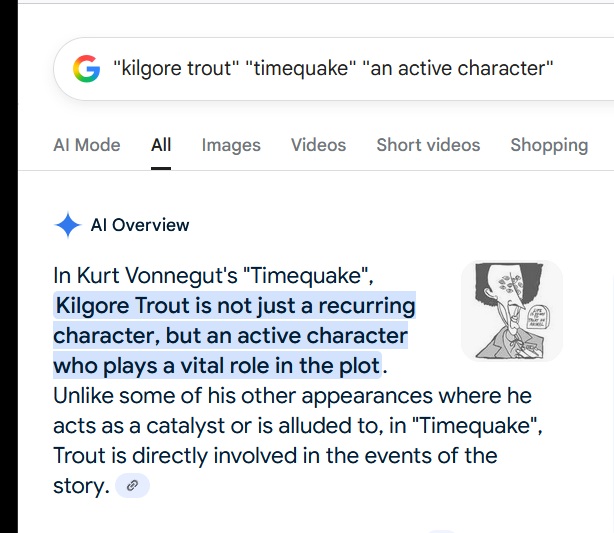
As is the similarly named scifi author Theodore Sturgeon
in fictional events at a real Whanganui alley.
Gap Gambit
"Life has a gap in it." — Sarah Silverman in "Take This Waltz."
See also . . .
http://m759.net/wordpress/?s=Gap .

Coloring Book: Tempting Newton
Friday, August 8, 2025
Johns Hopkins University obituary for Jack Morava
Thursday, August 7, 2025
Patterns and Relationships, Part Deux
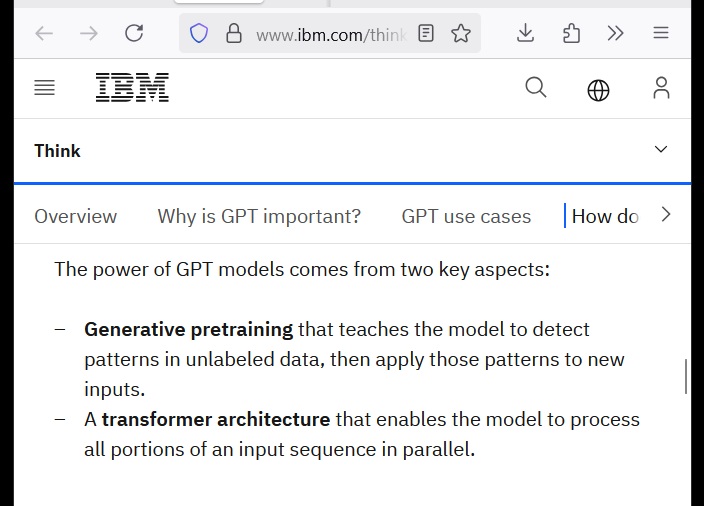
Megan Fox in "Transformers" (2007) —
Addendum: Where credit is due . . .

See also posts from the above Emma Watson Prada date — 15 Dec. 2022.
Patterns and Relationships
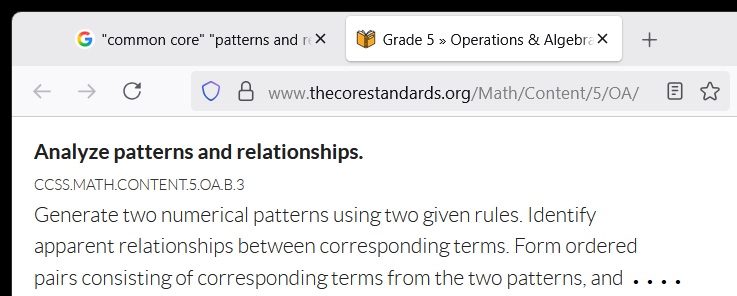
See as well Eichler's Reciprocity Law.
Points
"What do you get with that card?"
"Big Top points."
Cicero, In Verrem II. 1. 46 —
He reached Delos. There one night he secretly 46 carried off, from the much-revered sanctuary of Apollo, several ancient and beautiful statues, and had them put on board his own transport. Next day, when the inhabitants of Delos saw their sanc- tuary stripped of its treasures, they were much distressed . . . .
Delum venit. Ibi ex fano Apollinis religiosissimo noctu clam sustulit signa pulcherrima atque anti- quissima, eaque in onerariam navem suam conicienda curavit. Postridie cum fanum spoliatum viderent ii
Ex Fano

Wednesday, August 6, 2025
For Wednesday Fans: Grade 8 Date
Riff Design

The above flashback was suggested by a cartoon detail in
the January 24, 2018, posts now tagged Logic Points —

Syntax and Semantics
Synchronology check: This journal on the above Lurie date —
January 24, 2018 — in posts now tagged Logic Points.
Cubes
From a post on the Feast of St. Nicholas, 2018,
"The Mathieu Cube of Iain Aitchison" —
Compare and contrast . . .
The Supercube of Solomon Golomb.
Tuesday, August 5, 2025
Heisenberg’s “Geometry and Kinematics” —
Arrangements and Movements
The title is from remarks by Heisenberg in the previous post.
Illustrated below are some classic arrangements . . .
The simplex at left is rather static, while the 4×4 array
at right is surprisingly dynamic, giving rise to a group
of 322,560 movements.
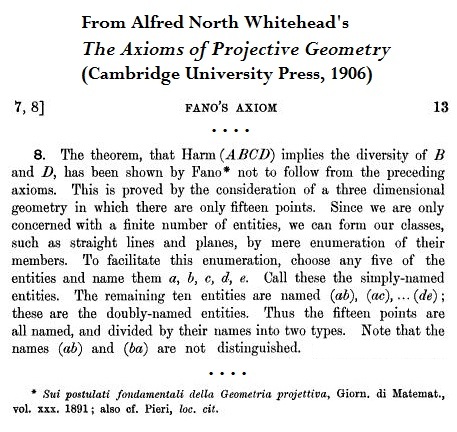
Static Simplex vs. Dynamic Array —
Related Disney artifacts —
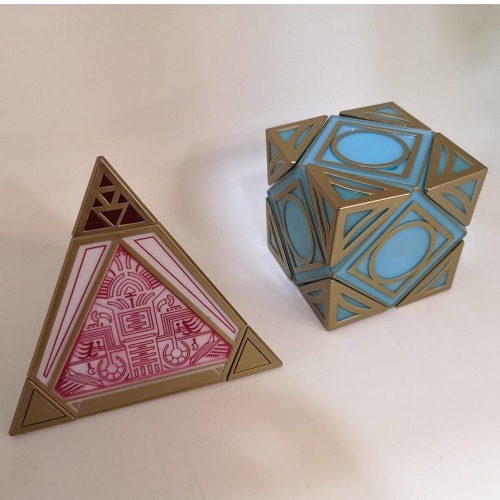
Arrangements and Movements
Heisenberg for Turin
In memory of a writer on mathematics and logic
who reportedly died on January 13, 2025 —
From posts now tagged Heisenberg Letters . . .
"Just as both tragedy and comedy can be written
by using the same letters of the alphabet, the vast
variety of events in this world can be realized by
the same atoms through their different arrangements
and movements. Geometry and kinematics, which
were made possible by the void, proved to be still
more important in some way than pure being."
— Werner Heisenberg in Physics and Philosophy





